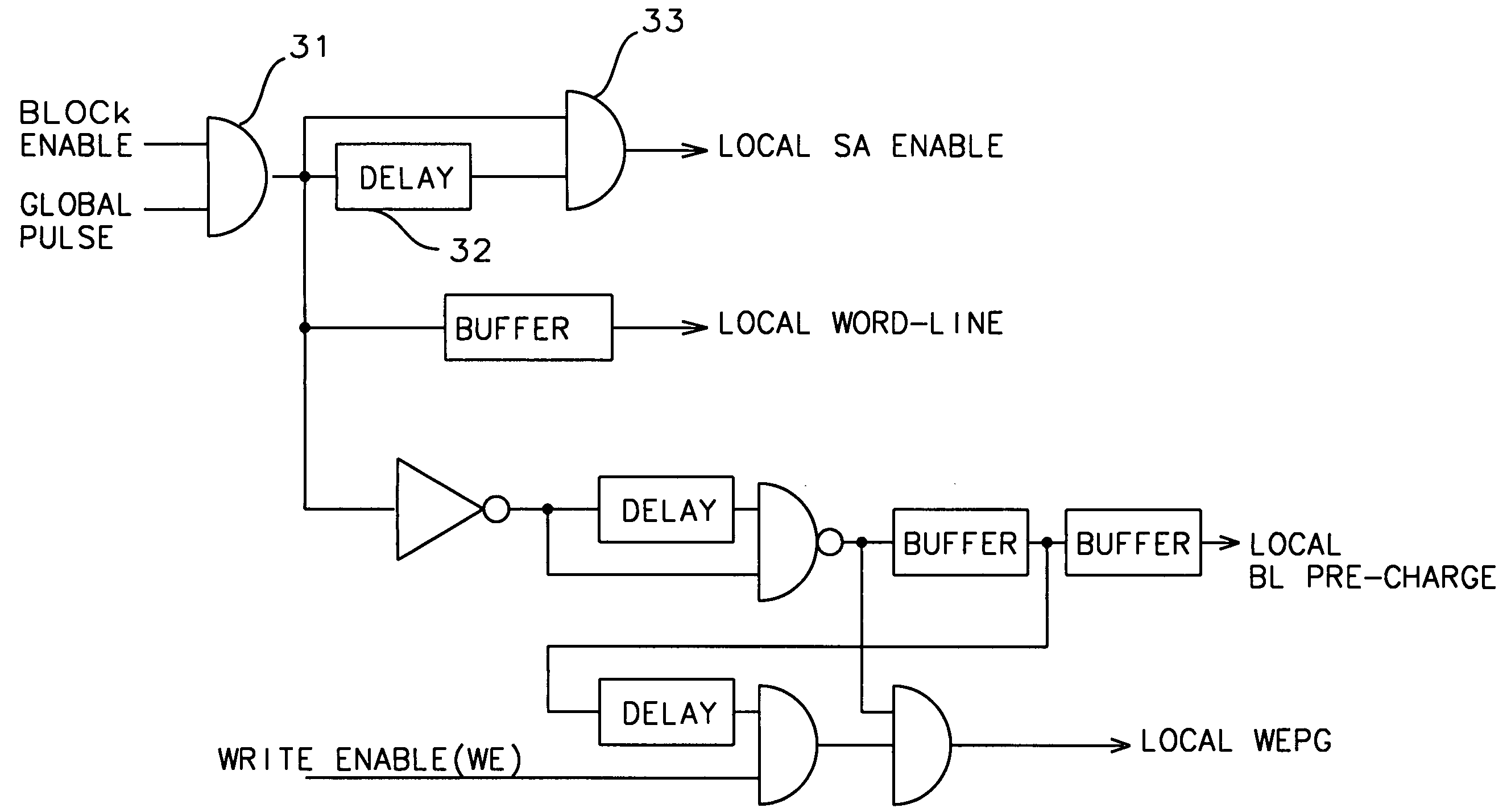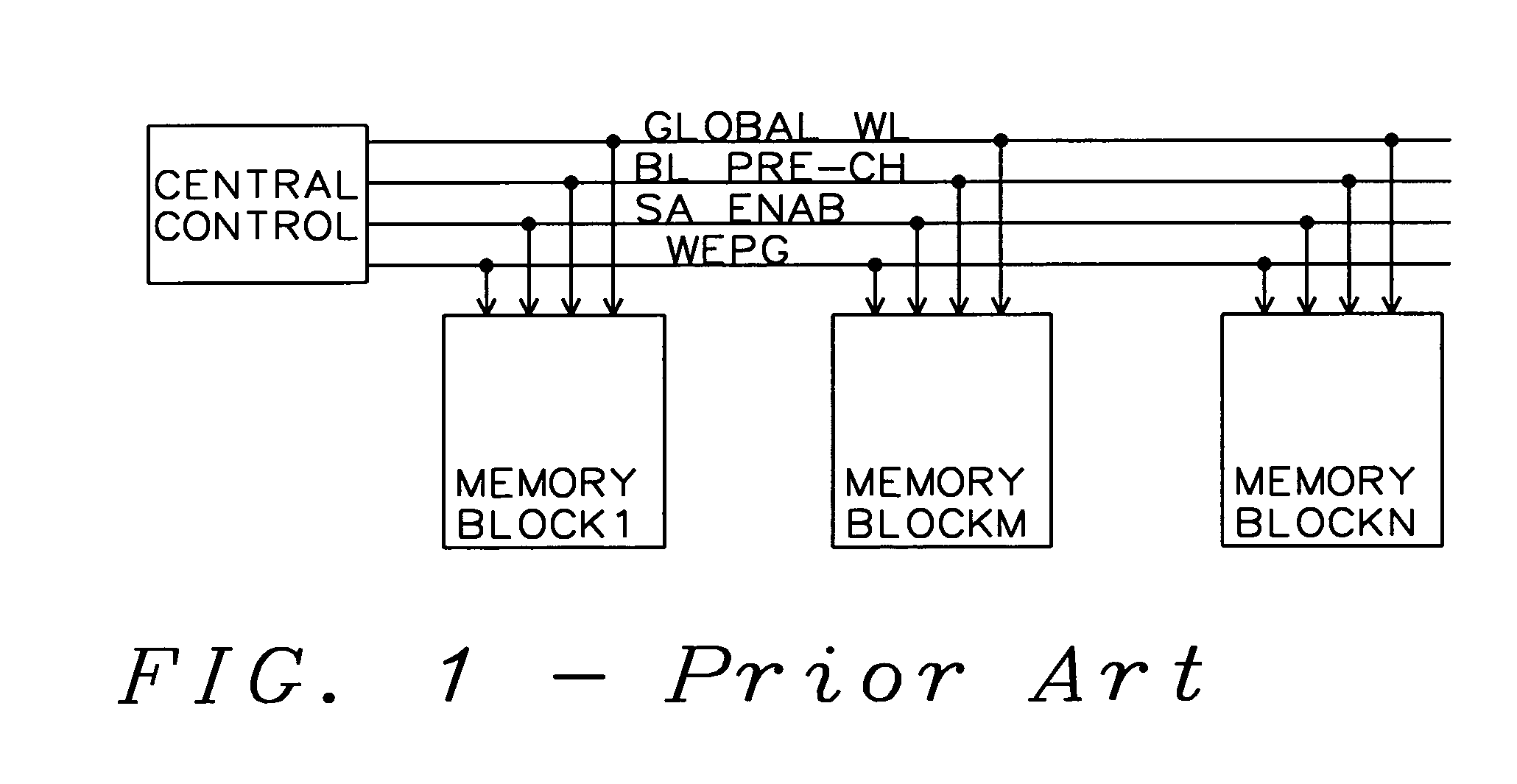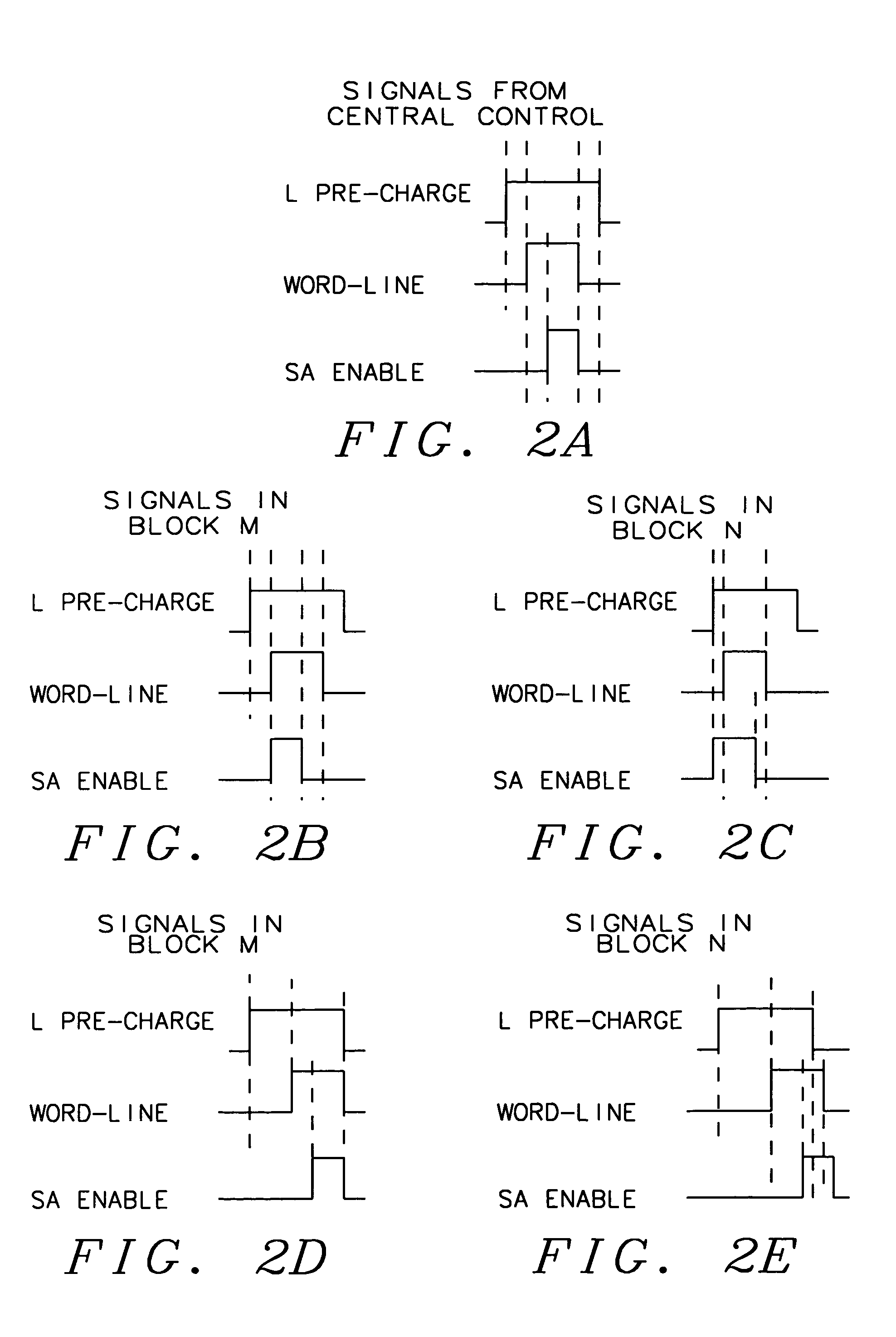Skew free control of a multi-block SRAM
a multi-block sram and control pulse technology, applied in the field of control of multi-block semiconductor srams, can solve the problems of limiting the speed of memory operation, memory malfunction, variable skew of control pulses, etc., and achieves the effect of reducing timing skew, reducing timing skew, and speeding up memory cycle times
- Summary
- Abstract
- Description
- Claims
- Application Information
AI Technical Summary
Benefits of technology
Problems solved by technology
Method used
Image
Examples
Embodiment Construction
[0021]Referring now to FIG. 4, it shows a block diagram illustrating the principal components, according to the preferred embodiment of the invention, consisting of central control and a multiplicity of SRAM memory blocks. The Central Control 21 generates a single Global Pulse which is distributed to each of the memory blocks via Global Pulse Line 20. Each of the SRAM memory blocks 22, 23 and 24 in the system are identical. Each memory block contains an identical local signal generator which responds to the single global pulse and generates the required memory control pulses. Thus, SRAM memory block 23 (M) contains the local signal generator (Loc.Sig.Gen.) 25 which generates the four memory control pulses which are required for the various memory operations. These are: Word Line pulse (WL), Bit-line Pre-charge pulse (BL Prech.), Sense Amplifier Enable (SA Enab.) and Write Enable Pass Gate (WEPG).
[0022]FIG. 5 shows a block diagram of a local signal generator. A similar local signal g...
PUM
 Login to View More
Login to View More Abstract
Description
Claims
Application Information
 Login to View More
Login to View More - R&D
- Intellectual Property
- Life Sciences
- Materials
- Tech Scout
- Unparalleled Data Quality
- Higher Quality Content
- 60% Fewer Hallucinations
Browse by: Latest US Patents, China's latest patents, Technical Efficacy Thesaurus, Application Domain, Technology Topic, Popular Technical Reports.
© 2025 PatSnap. All rights reserved.Legal|Privacy policy|Modern Slavery Act Transparency Statement|Sitemap|About US| Contact US: help@patsnap.com



